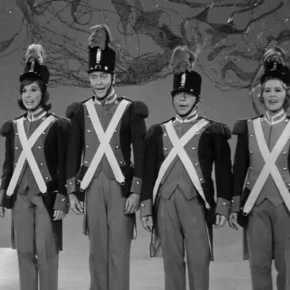This week saw the publication of a study by the American College of Sports Medicine that proclaims Washington, DC, as the “Fittest City in America.”
This had me scratching my head a little bit, as the study seems to weigh infrastructure factors above all others, rather than the general health and well-being of the population. Also, the study included Arlington and Alexandria, VA, in its study, which will skew numbers in favor of the fit.
I posted my thoughts on this subject over on BikeForums [edited for additional context here]:
Yes, the infrastructure is there: plenty of parks, MUPs and such. But do the citizens take full advantage of these? Perhaps those who live in the more affluent areas of the District (Dupont, Georgetown, upper Northwest, Capitol Hill), but there are plenty of less affluent areas in DC where other factors work against fitness (to the detriment of all involved with the cost of healthcare, etc.). If you expand the scope of the study to include Arlington and Alexandria, VA (as this study did), and the surrounding border cities in Maryland, it’s still a stretch to call DC the “fittest city,” though the odds improve in terms of finding fit people.
But [a fellow BikeFoums member] who quipped that the study “must have forgotten the area that isn’t tourist-friendly” really isn’t that far off. What about the east side of the Anacostia River? There’s a high rate of diabetes, obesity and other preventable diseases and conditions in this area which is well off the tourist radar. Same with pockets of Prince George’s and Montgomery Counties in Maryland, where low-income families have more immediate perceived worries than physical fitness.
It’s as if the study turned a blind eye on Wards 5, 7 and 8, with their comparatively lower income levels and less-developed infrastructure of MUPs, bike lanes and trails. While there are recreation centers in these areas, complete with fields, tennis and basketball courts, and swimming pools, these facilities aren’t always used to their best potential. For example, swimming pools are used most often as a means to cool off and relax in the hot months of summer, rather than as a fitness venue.
I continued with my BikeForums post:
In my neighborhood (Dupont Circle/Kalorama), there are a great number of fit people, many of them younger, almost all fairly affluent in the grand scheme of things. They ride their bikes, run, swim and take advantage of the provided infrastructure, as well as pay-to-play resources like health clubs. But my neighborhood isn’t at all representative of DC, as a whole.
And that’s my beef with this study: it seems to look very fondly upon the more-visited and more gentrified parts of the DC area while turning a blind eye on the poorer areas where fitness levels are lower. Sure, northwest DC (as well as Arlington County) is a veritable treasure trove of fitness infrastructure, and the people who live in these areas take great advantage of the spoils of their location.
However, simply crossing to the east side of the Anacostia River reveals an environment where riding a bike on the streets often puts one in a danger zone: few bike lanes and MUPs, a populace that isn’t used to co-existing with bikes on the roads, fewer public pools and parks. It is good to see any movement toward improvement in this area (e.g. the Southeast Tennis and Learning Center and the Anacostia River Recreation Trail), but the money-rich parts of the District seem to see the better half of free fitness amenities.
As I concluded on BikeForums, I take this ranking with the same grain of salt as Bicycling‘s declaration of DC as “America’s Most Improved Cycling City“: it’s all well and good, but there’s a lot of missing context. We have a fitness fanatic mayor (whose favorite outdoor pool is now heated – go fig – and who keep up with his bicycle racing and triathlon schedule with seemingly more excitement than his governing duties) and a section of the city (and surrounding environs) that is chock-full of active, fit citizens. But DC isn’t all pretty, trim people: the District has more than its fair share of poverty, preventable disease and obesity.
Context is everything.















Eileen
29 May 2009 — 09:55
I love it when people actually think critically and evaluate these headline driven ranking lists. Thanks for lots of thought provoking comments.